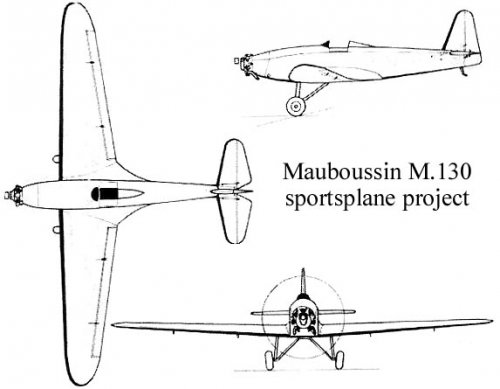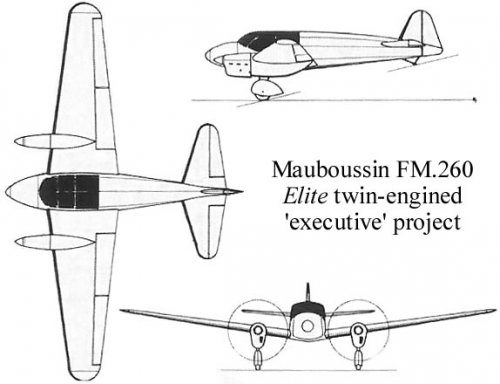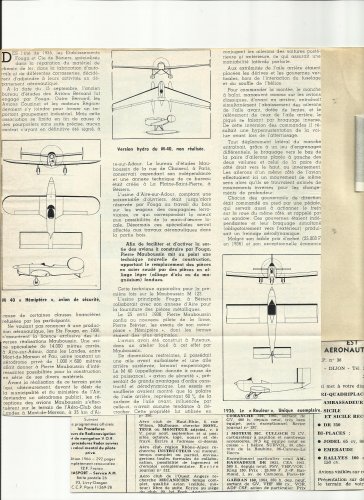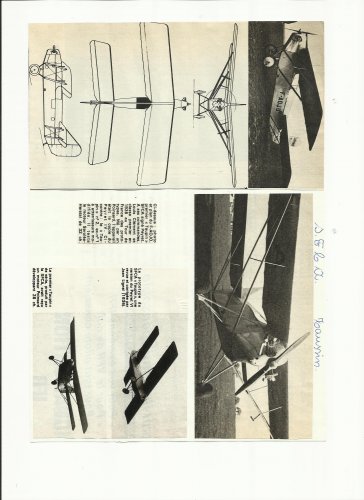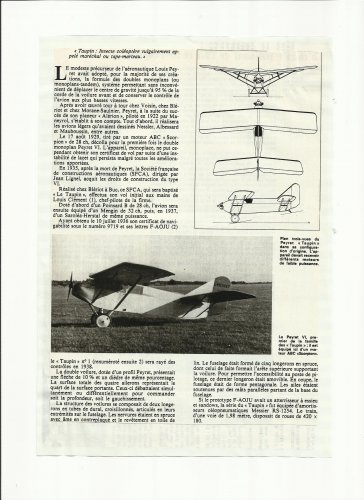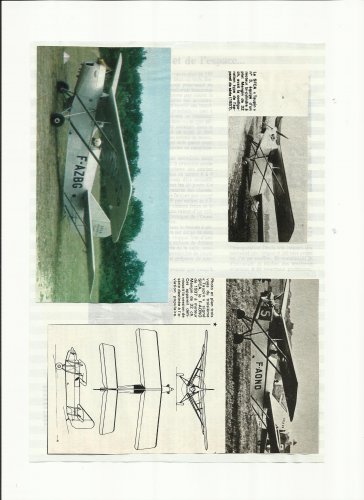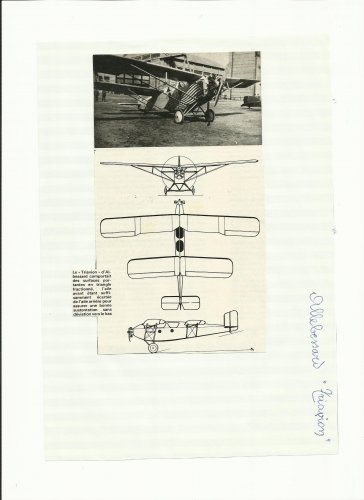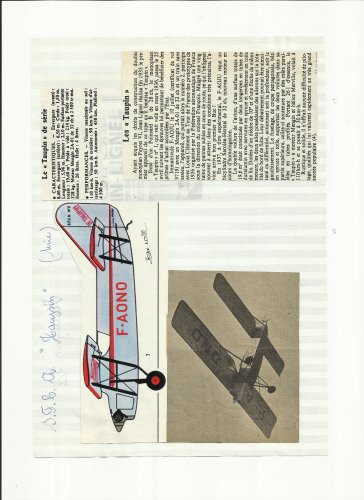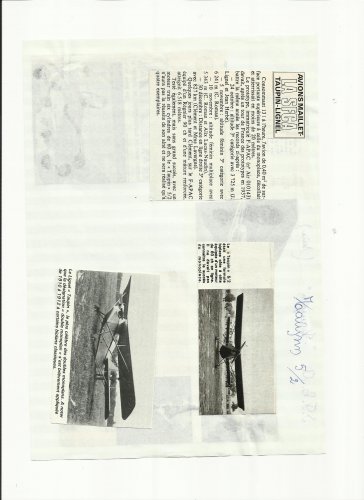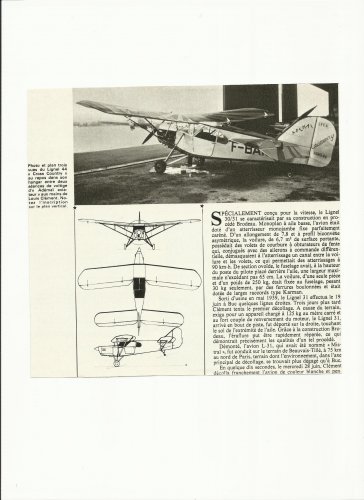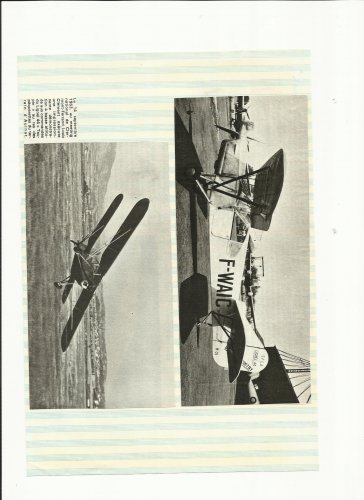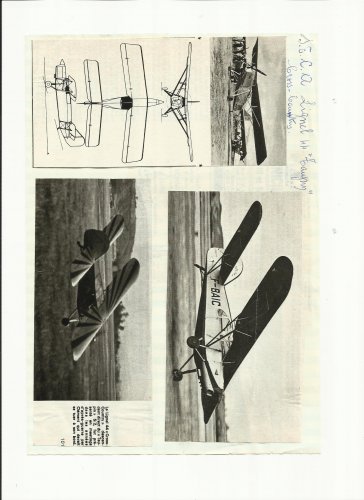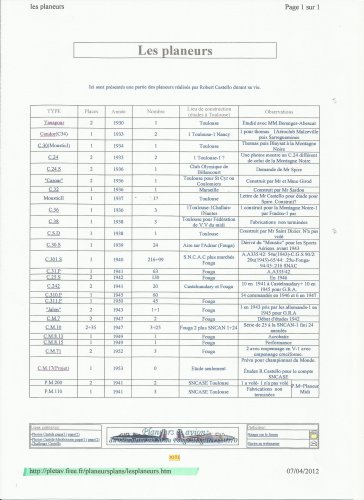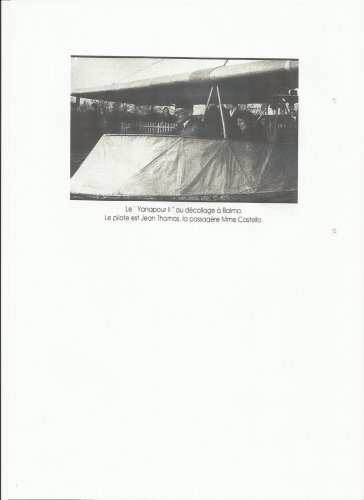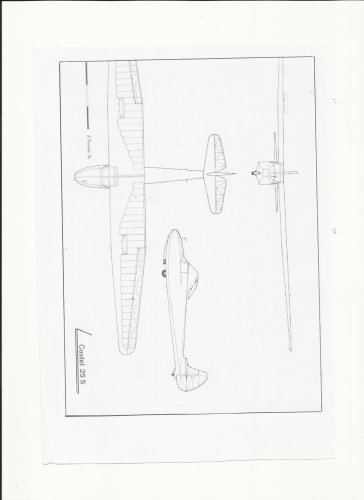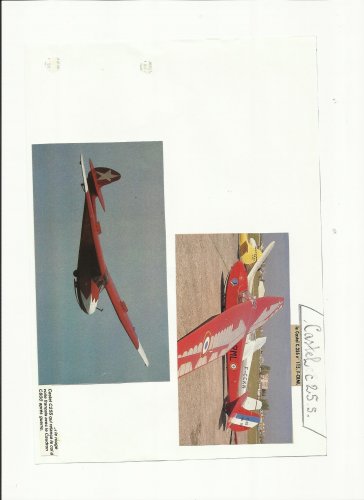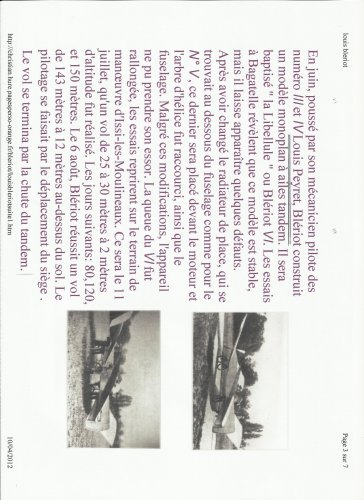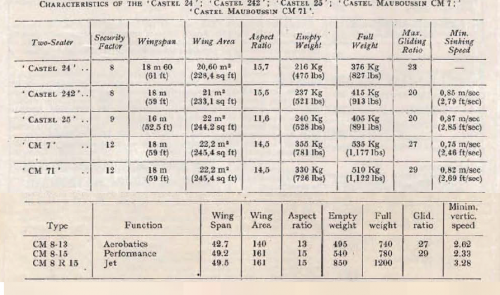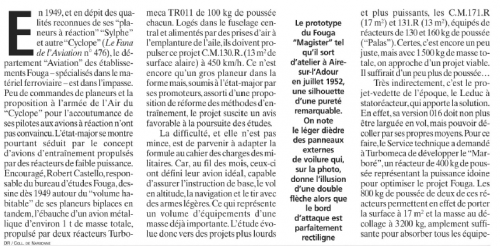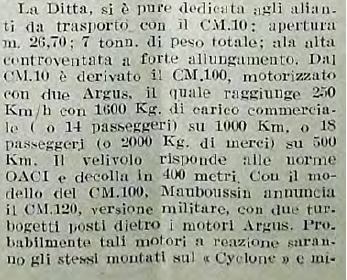- Joined
- 25 July 2007
- Messages
- 4,299
- Reaction score
- 4,196
Moderator: This post has now been duplicated in its own, dedicated thread
--https://www.secretprojects.co.uk/threads/louis-peyret-peyret-mauboussin-aircraft-designations.45741/
Designations of Avions Pierre Mauboussin and Peyret-Mauboussin
Louis Augustin Peyret
Pierre Mauboussin's designation sequence springs from his earlier association with pioneer designer, Ing Louis Peyret (ex-Blériot designer, ex-Morane Saulnier research chief, and tandem-wing monoplane pioneer). Those Peyret-Mauboussin 'PM' designation numbers overlap with Avions Mauboisson 'M' numbers (listed together in the next post).
Because Peyret's tandem-winged 'Le Taupin' is also listed as the Peyret VI, it is tempting to suggest that the Peyret-Mauboussin PM sequence follows on from an earlier Peyret series. Unfortunately, there's little sign of such a numbering system.
Peyret gave names to his earlier design but, aside from the Peyret VI and one Flight reference to a 'PM 4' (actually a typo for the PM X, see next post), there is no obvious aircraft numbering (although Peyret's airfoil designs were numbered). Peyret was associated with numerous gliders (eg: Georges Abrial) and tandem-wing projects (eg: with Louis Paulhan and the Albessard Triavion). Only projects with Peyret's name firmly attached are listed immediately below:
Early Louis Peyret Aircraft Names
Peyret Alérion - 1922 single-seat tandem-wing glider, 6.6m span (main), 2 built
-- aka Peyret Tandem (orig. name), Alérion Tandem, or simply the Planeur Peyret
- Alérion n° 1: Maneyrol set duration record (3h22), Itford Hill, 21 Oct 1922
- Alérion n° 2: written-off by Lt. Le Petit near Biskra, Algeria, 12 Feb 1923
-- Vieilles Toiles et Planeurs Modernes - Peyret Alérion Tandem - photos/3 views
-- http://claudel.dopp.free.fr/Les_planeurs/Descriptions_planeurs/Peyret_Alerion/Peyret_Alerion.htm
-- NB: Alérion was a footless and beakless heraldic bird (usually an eagle)
-- Medieval bestiaries said only two Alérions exist at a time -- n° 1 & n° 2
Peyret - (Project) 1923 powered Alérion fitted with 7 hp engine (type unidentified)
-- Flight 19 Apr 1923 announced plans for a flight from Vauville to Jersey
-- Flight 19 Apr 1923, Light 'Plane and Glider Notes http://www.flightglobal.com/pdfarchive/view/1923/1923 - 0215.html
Peyret Avionette - 1922-23 moto-aviette (very light a/c) with "moteur auxiliaire"
- Avionette: 1 x nose-mounted 16 hp air-cooled upright inline 4-cyl Sergant A
-- L'avionnette Louis Peyret, by J. Serryer, Les Ailes, 04/10/1923, n° 120, p.25
- Avionette: aka Peyret Monoplan, experimental monoplane of conventional layout
- Wings folded up on approach, Lympne trials 13 Oct 1923, Alexis Maneyrol killed
-- Flight 18 Oct 1923, The Light 'Plane Meeting at Lympne - Avionette photos
-- http://www.flightglobal.com/pdfarchive/view/1923/1923%20-%200643.html
-- j2mcl Planeurs http://www.j2mcl-planeurs.net/dbj2mcl/planeurs-machines/planeur-fiche_0int.php/?code=2572
Peyret-le Prieur Hydroplan - 1924 light biplane seaplane trainer, 1 x engine
- Hydroplan: designed for Yves le Prieur (of aerial rocket & aqualung design fame)
-- Hydroplan engine: 1st trials 16 hp 4-cyl Sergant, then repl. by 45 hp Anzani 6
-- Flight 4 Sept 1924 - Light 'Plane and Glider Notes
-- http://www.flightglobal.com/pdfarchive/view/1924/1924 - 0554.html
-- L'hydravion Louis Peyret, biplan à moteur Sergant 16 CV, by J. Serryer, Les Ailes, 14/08/1924, n° 165, p.25
Peyret-Abrial A-2: 1925 Vautour (Vulture) wooden single-seat glider, 6.25m span
- A-2 Vautour: glider designed by Georges Abrial, 1 built by Ateliers Peyret
Peyret-Abrial A-5: 1928 Rapace (Raptor) single-seat sailplane, aka Abrial A-5, 16m span
- A-5: design by Georges Abrial, assist. by Peyret and Prof. Toussaint, 1 built
Peyret VI - 1930 Taupin 2-seat tandem-wing, 1 x 50hp Beaussier, 7.2m span*
-- Taupin was essentially an enlarged, powered deriv. of the Alérion glider
-- Flight 5 Sept 1946 - Private Flying in France
-- http://www.flightglobal.com/pdfarchive/view/1946/1946 - 1726.html
-- * Sailplane & Glider 31 Mar 1933 says 8.4m main and 6.5m rear wing spans
- SFCA-Peyret Taupin: 1936-37 (flown 1937) amateur-construction Peyret VI
-- SFCA-Peyret aka "Le Taupin", 1 x 30 hp flat-2 cylinder Mengin 2 A1*
-- * Also flown with 30 hp ABC Scorpion horizontally-opposed 2-cylinder
Peyret (??)- (Project) 19(??) 2-seat tandem, low-wing in front, high-wing behind
-- NB: Lay-out reappears on Mauboussin's 1936 M.40 Hémiptère research a/c
-- Sailplane & Glider vol.4 no.6 31 March 1933
-- http://www.lakesgc.co.uk/mainwebpages/Sailplane%20&%20Glider%201930%20-%201955/volume%204%20No.%206%20Mar%2031%201933.pdf
Peyret-Nessler Libellule - 1928 single-seat* parasol lightplane, 1 x 12hp Salmson 3-cyl
- Libellule: 1 built (F-AISQ), * but often flown with Mde Eric Nessler as passenger
-- NB: 'Libellule' also name of the Peyret-designed, tandem-winged 1907 Blériot VI
Peyret-Mauboussin Helicoplane - (Project) 1929 helicoplane or autogyro
NB: Georges Abrial's 1932 AIR 5 2-seat training glider design was to be built by Ateliers Peyret but this plan ended with Louis Peyret's death in 1933. It was eventually built by Arsenal as the AIR 50.
___________________________________
--https://www.secretprojects.co.uk/threads/louis-peyret-peyret-mauboussin-aircraft-designations.45741/
Designations of Avions Pierre Mauboussin and Peyret-Mauboussin
Louis Augustin Peyret
Pierre Mauboussin's designation sequence springs from his earlier association with pioneer designer, Ing Louis Peyret (ex-Blériot designer, ex-Morane Saulnier research chief, and tandem-wing monoplane pioneer). Those Peyret-Mauboussin 'PM' designation numbers overlap with Avions Mauboisson 'M' numbers (listed together in the next post).
Because Peyret's tandem-winged 'Le Taupin' is also listed as the Peyret VI, it is tempting to suggest that the Peyret-Mauboussin PM sequence follows on from an earlier Peyret series. Unfortunately, there's little sign of such a numbering system.
Peyret gave names to his earlier design but, aside from the Peyret VI and one Flight reference to a 'PM 4' (actually a typo for the PM X, see next post), there is no obvious aircraft numbering (although Peyret's airfoil designs were numbered). Peyret was associated with numerous gliders (eg: Georges Abrial) and tandem-wing projects (eg: with Louis Paulhan and the Albessard Triavion). Only projects with Peyret's name firmly attached are listed immediately below:
Early Louis Peyret Aircraft Names
Peyret Alérion - 1922 single-seat tandem-wing glider, 6.6m span (main), 2 built
-- aka Peyret Tandem (orig. name), Alérion Tandem, or simply the Planeur Peyret
- Alérion n° 1: Maneyrol set duration record (3h22), Itford Hill, 21 Oct 1922
- Alérion n° 2: written-off by Lt. Le Petit near Biskra, Algeria, 12 Feb 1923
-- Vieilles Toiles et Planeurs Modernes - Peyret Alérion Tandem - photos/3 views
-- http://claudel.dopp.free.fr/Les_planeurs/Descriptions_planeurs/Peyret_Alerion/Peyret_Alerion.htm
-- NB: Alérion was a footless and beakless heraldic bird (usually an eagle)
-- Medieval bestiaries said only two Alérions exist at a time -- n° 1 & n° 2
Peyret - (Project) 1923 powered Alérion fitted with 7 hp engine (type unidentified)
-- Flight 19 Apr 1923 announced plans for a flight from Vauville to Jersey
-- Flight 19 Apr 1923, Light 'Plane and Glider Notes http://www.flightglobal.com/pdfarchive/view/1923/1923 - 0215.html
Peyret Avionette - 1922-23 moto-aviette (very light a/c) with "moteur auxiliaire"
- Avionette: 1 x nose-mounted 16 hp air-cooled upright inline 4-cyl Sergant A
-- L'avionnette Louis Peyret, by J. Serryer, Les Ailes, 04/10/1923, n° 120, p.25
- Avionette: aka Peyret Monoplan, experimental monoplane of conventional layout
- Wings folded up on approach, Lympne trials 13 Oct 1923, Alexis Maneyrol killed
-- Flight 18 Oct 1923, The Light 'Plane Meeting at Lympne - Avionette photos
-- http://www.flightglobal.com/pdfarchive/view/1923/1923%20-%200643.html
-- j2mcl Planeurs http://www.j2mcl-planeurs.net/dbj2mcl/planeurs-machines/planeur-fiche_0int.php/?code=2572
Peyret-le Prieur Hydroplan - 1924 light biplane seaplane trainer, 1 x engine
- Hydroplan: designed for Yves le Prieur (of aerial rocket & aqualung design fame)
-- Hydroplan engine: 1st trials 16 hp 4-cyl Sergant, then repl. by 45 hp Anzani 6
-- Flight 4 Sept 1924 - Light 'Plane and Glider Notes
-- http://www.flightglobal.com/pdfarchive/view/1924/1924 - 0554.html
-- L'hydravion Louis Peyret, biplan à moteur Sergant 16 CV, by J. Serryer, Les Ailes, 14/08/1924, n° 165, p.25
Peyret-Abrial A-2: 1925 Vautour (Vulture) wooden single-seat glider, 6.25m span
- A-2 Vautour: glider designed by Georges Abrial, 1 built by Ateliers Peyret
Peyret-Abrial A-5: 1928 Rapace (Raptor) single-seat sailplane, aka Abrial A-5, 16m span
- A-5: design by Georges Abrial, assist. by Peyret and Prof. Toussaint, 1 built
Peyret VI - 1930 Taupin 2-seat tandem-wing, 1 x 50hp Beaussier, 7.2m span*
-- Taupin was essentially an enlarged, powered deriv. of the Alérion glider
-- Flight 5 Sept 1946 - Private Flying in France
-- http://www.flightglobal.com/pdfarchive/view/1946/1946 - 1726.html
-- * Sailplane & Glider 31 Mar 1933 says 8.4m main and 6.5m rear wing spans
- SFCA-Peyret Taupin: 1936-37 (flown 1937) amateur-construction Peyret VI
-- SFCA-Peyret aka "Le Taupin", 1 x 30 hp flat-2 cylinder Mengin 2 A1*
-- * Also flown with 30 hp ABC Scorpion horizontally-opposed 2-cylinder
Peyret (??)- (Project) 19(??) 2-seat tandem, low-wing in front, high-wing behind
-- NB: Lay-out reappears on Mauboussin's 1936 M.40 Hémiptère research a/c
-- Sailplane & Glider vol.4 no.6 31 March 1933
-- http://www.lakesgc.co.uk/mainwebpages/Sailplane%20&%20Glider%201930%20-%201955/volume%204%20No.%206%20Mar%2031%201933.pdf
Peyret-Nessler Libellule - 1928 single-seat* parasol lightplane, 1 x 12hp Salmson 3-cyl
- Libellule: 1 built (F-AISQ), * but often flown with Mde Eric Nessler as passenger
-- NB: 'Libellule' also name of the Peyret-designed, tandem-winged 1907 Blériot VI
Peyret-Mauboussin Helicoplane - (Project) 1929 helicoplane or autogyro
NB: Georges Abrial's 1932 AIR 5 2-seat training glider design was to be built by Ateliers Peyret but this plan ended with Louis Peyret's death in 1933. It was eventually built by Arsenal as the AIR 50.
___________________________________
Last edited:

